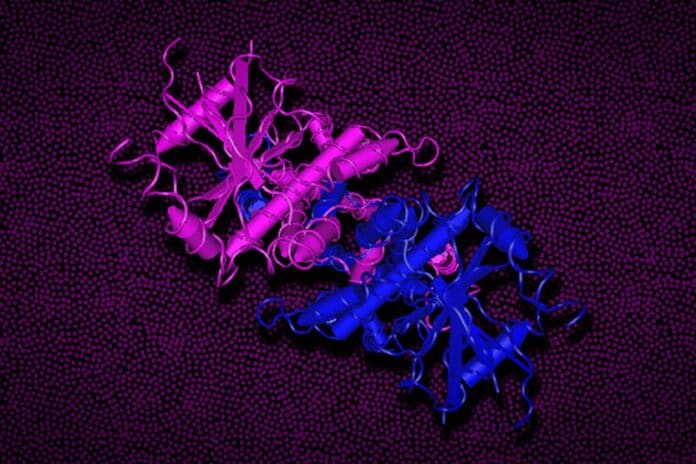STING is an innate immune sensor that induces noncanonical autophagy and the inflammasome. It is a significant immune response trigger in infection, autoimmunity, and cancer. It is essential to the human immune system, recognizing danger within cells and triggering multiple defense systems.
STING searches for DNA, which can signify foreign intruders or damage to host tissue or cells. When STING senses this danger signal, it can activate at least three distinct pathways: interferon production, noncanonical autophagy, and the creation of the inflammasome, a protein complex that triggers inflammatory reactions. The method by which STING increases interferon production is well recognized, but how it begins the other two processes differs.
STING-activating medicines have been created and tested in clinical trials as cancer immunotherapy medications to encourage the immune system to attack tumors. It is a membrane-spanning protein typically found embedded in the membrane of an organelle termed the endoplasmic reticulum (ER). When it finds DNA, it moves to the Golgi body. It starts activating proteins that switch on genes essential for interferon production.
MIT and Harvard Medical School researchers have discovered how STING activates those two pathways. They found that STING has a surprising and previously unknown function: it can act as an ion channel that allows protons to leak out of an organelle called the Golgi body. It is the first human immune sensor to translate danger signals into ion flow.
The discovery of STING’s ion channel activity will provide opportunities for developing therapies to modulate STING.
Nir Hacohen, a member of the Broad Institute of MIT and Harvard, a professor of medicine at Massachusetts General Hospital and Harvard Medical School, and a senior author of the study, said, “Arriving at this new idea that STING is a proton channel required connecting prior findings by other labs that either STING or proton flux could activate the inflammasome and noncanonical autophagy, which led us to hypothesize that STING initiates or mediates proton flux to trigger both downstream processes.”
Liu said, “People know pretty well how STING induces interferon, but how STING induces autophagy and inflammasome formation has been an open debate in the field for the last ten years.”
The researchers investigated this hypothesis by labeling the Golgi with a protein that fluoresces when the pH rises. When scientists exposed the cells to a chemical that stimulates STING, the Golgi became less acidic, indicating that protons were being lost. The researchers hypothesized that STING was working as a proton channel after a genetic test eliminated the likelihood of another ion channel directing this ion flow.
A previous study has shown that protons leaking from cell organelles, which cause the inside of the cell to become more acidic, can trigger autophagy and the development of inflammasomes. The researchers wondered if STING could cause proton leakage.
The researchers suggest that STING was working as a proton channel after a genetic test eliminated the likelihood of another ion channel directing this ion flow. Researchers believe that C53 inhibits the putative pore of the STING protein, preventing protons from leaking out of the Golgi and downstream pathways that activate autophagy and inflammasome formation. However, interferon activation continued.
Researchers activated interferon with C53 while suppressing autophagy and inflammasome production. This enables the identification of the essential molecular processes involved in inflammatory disorders. This is caused by overactivated STING, providing a better understanding of the phenotype. The researchers hope to explore whether STING might play a role in influencing the behavior of other cellular activities known to be controlled by ion channels.
Carlson said, “Now that we know that STING is an ion channel, we can propose other effects that we think could occur based on this knowledge that STING does transport protons.”
The U.S. National Institutes of Health and the Howard Hughes Medical Institute funded the research.
Journal Reference:
- Bingxu Liu, Ivan S. Pires, et al. Human STING is a proton channel. Science. DOI: 10.1126/science.adf8974
